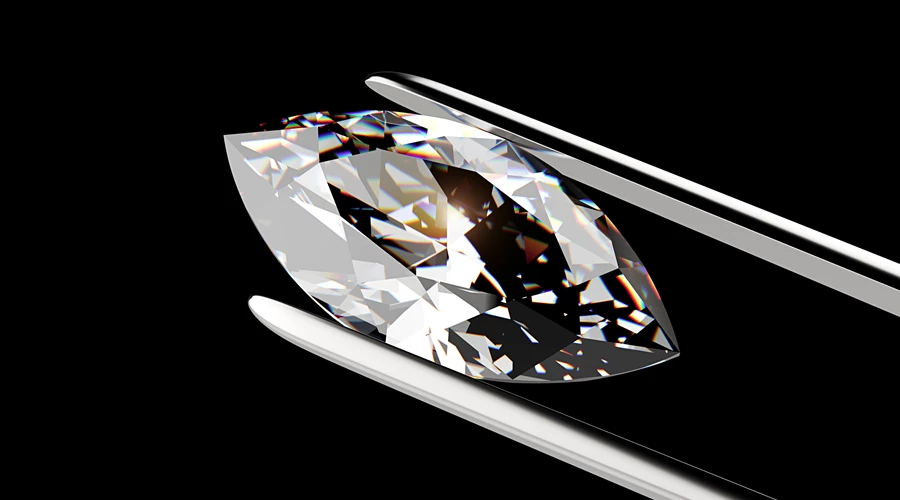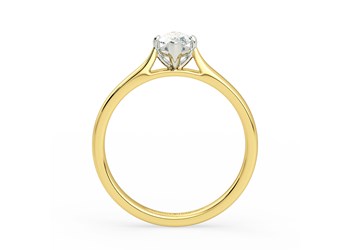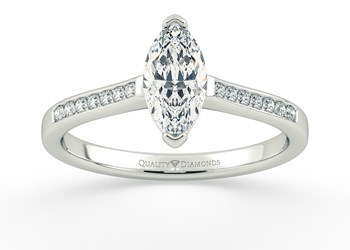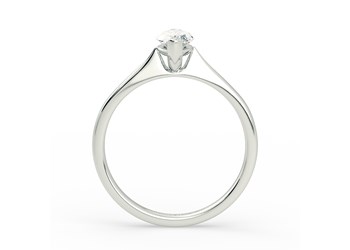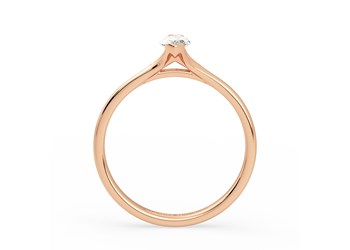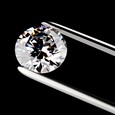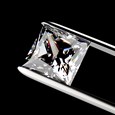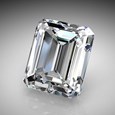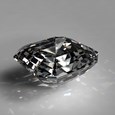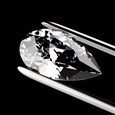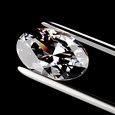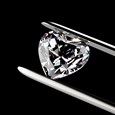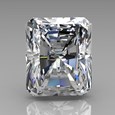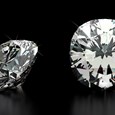Sign up for our Newsletter
Marquise Cut Diamonds
Slender, sensual, enigmatic: there is something quite mystical about the Marquise Cut.
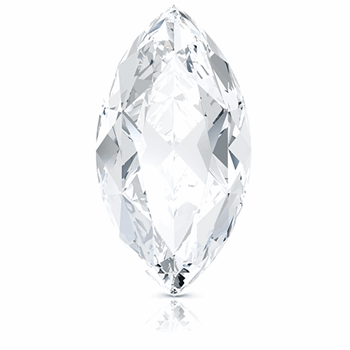
Marquise Cut Diamond (Top View)
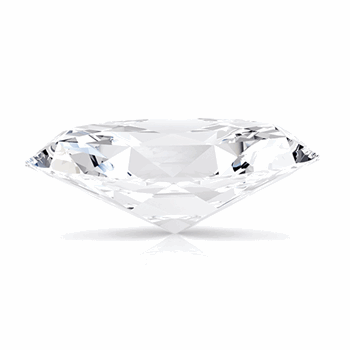
Marquise Cut Diamond (Side View)
| Outline | Boat shaped |
|---|---|
| Cutting Style | Brilliant |
| Description | Slender and sparkling shape that helps to lengthen fingers |
| No. of Facets | 57 |
| Ideal L/W Ratio | 1.85 - 2.10 |
EXQUISITELY ENCHANTING
Although it originated in France, its shape conjures visions of exotic palaces full of Eastern promise, and within its delicate form it possesses a strength of beauty at once dazzling and modest.
Following the Round Brilliant, the Princess Cut and the Emerald Cut, the Marquise is probably the fourth most chosen shape. Its long, narrow outline naturally complements the shape of the finger making it a popular choice for engagement rings, with or without side stones.
We Say
Because of their length, Marquise Cut gems need enough depth to give them their stunning brilliance. Diamonds that are too shallow allow light to pass through the base which makes the stone appear dull.
TECHNICAL SPECIFICATIONS AND GRADING
The Marquise is a brilliant cut which, like the Round Brilliant, means it is made up of 57 triangular and kite-shaped facets (33 on the crown and 24 on the pavilion). This gives it an outstanding capacity for fire and brilliance. Unlike a Round Brilliant, the pavilion of a Marquise may have 4, 6, or 8 main facets.
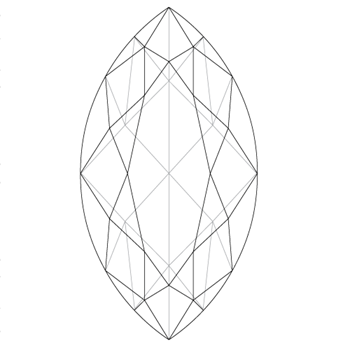
Marquise Cut Diamond (Top View)
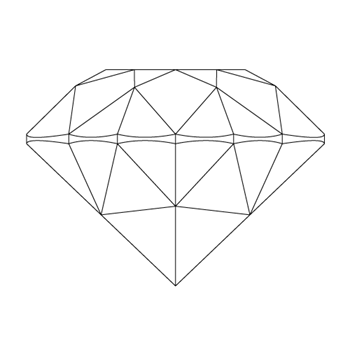
Marquise Cut Diamond (Side View)
Shop loose Marquise cut diamonds
The Marquise Cut is also known as the ‘Navette’. It is shaped like a little boat - a slim oval which narrows to a point at both ends.
Because of its shape, a Marquise allows the diamond cutter to preserve more of the rough stone than may be possible with a Round Brilliant. Its length, along with its curved sides, creates the illusion that the stone is bigger than it really is, maximizing the carat weight and making it a stunning choice for lower budgets.
The Bow-Tie Effect
Pear, marquise, oval and heart shape diamonds can suffer from a phenomenon known as the bow-tie effect. This is where an area of shadow resembling a bow tie can be seen in the centre of the stone.
Whilst it’s not unusual for some shadow to be visible in oval, pear, marquise and heart shape diamonds when viewed from a certain angle in a certain light, it’s undesirable for a diamond to have an obvious dark area when viewed from ANY angle in ALL lights. You should look for a stone with minimal shadow to detract from its beauty.
If you have any concerns about the bow-tie effect and would like to make an appointment to view diamonds at any of our showrooms, please contact us.
GRADING
Currently, there aren’t any universally accepted standards for grading the cut of Marquise cut diamonds so certifying laboratories don’t do it. Instead, it’s down to individual retailers to evaluate the quality of the cut for this shapes.
We've developed our own criteria to provide consistent cut grading for all the Marquise Cut diamonds we offer. These take into account factors such as table and depth percentage, polish and symmetry, and length to width ratio.
Refer to the table below to see how we grade Marquise Cut diamonds.
| Excellent | Very Good | Good | Fair | Poor | |
| Table % | 55%-62% | 53%-64% | 52%-65% | 50%-70% | <50% or >70% |
| Depth % | 58%-64% | 57%-66%% | 56%-68% | 46%-71% | <46% or >71% |
| Polish / Symmetry | Good to Excellent | Fair to Excellent | Poor to Excellent | ||
| Ratio (L/W) | 1.95-2.05 | 1.85-2.15 | 1.75-2.25 | 1.65-2.30 | <1.65 or >2.30 |
BACKGROUND AND HISTORY
The Marquise shape originated in Paris, circa 1745, when King Louis XV commissioned the court jeweller to create a diamond that resembled the smile of his mistress, the Marchioness Madame de Pompadour.
Since then the shape has evolved, resulting in the brilliant cut we know today. It experienced a surge in popularity during the 1960s, 70s and 80s and is now one of the most favoured shapes for all types of jewellery.
STYLE GUIDE
Elegant and striking, cultured and exotic, the Marquise Cut suits those with a refined sense of style and exquisite tastes. As suits the origins of the design, many men choose to give a Marquise diamond to complement a sparkling smile.
The slender Marquise has a lengthening effect so is perfect for making short fingers appear longer. A wider version of the shape will help to balance wide fingers or larger hands.
Shop Marquise diamond earrings
Length to Width Ratio
The traditional ideal length to width ratio for a Marquise Cut diamond is 2:1 - the stone being twice as long as it is wide. However, there are no strict rules and any ratio between 1.80 and 2.10 will give you a well-proportioned, attractive stone
If your heart is set on a Marquise shaped diamond but you don’t want fingers to appear longer than they already are, opt for a length to width ratio at the lower end of the recommended range (1.75 - 1.85) which will emphasize the stone’s width over its length. You could also consider a ring design where the stone is set horizontally on the finger - a choice that also complements wide fingers.
Setting
Choose a solitaire setting for stunning simplicity, or place a Marquise diamond in the centre of a multi-stone setting alongside round, princess, or baguette side stones.
-
Ethically Sourced Diamonds
-
Handmade in the UK
-
FREE Shipping Worldwide
-
60 Day Returns

